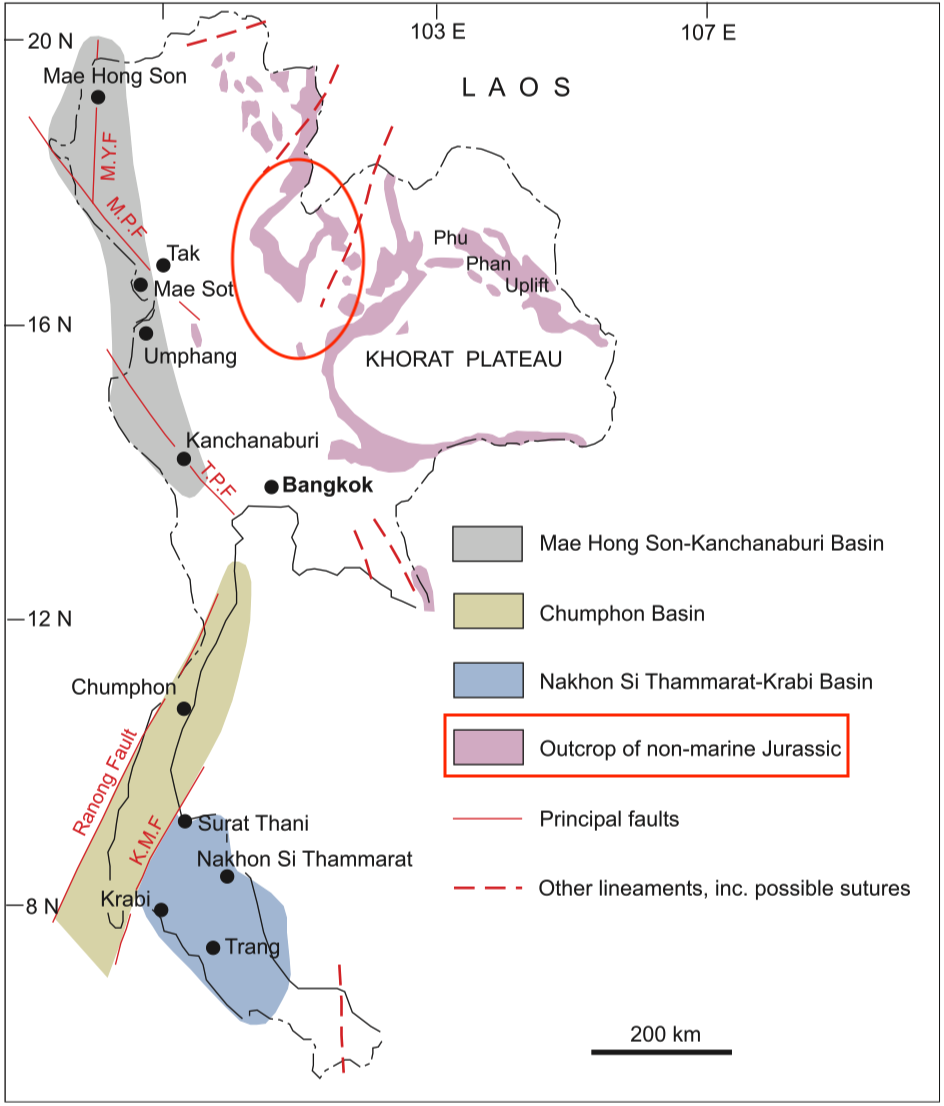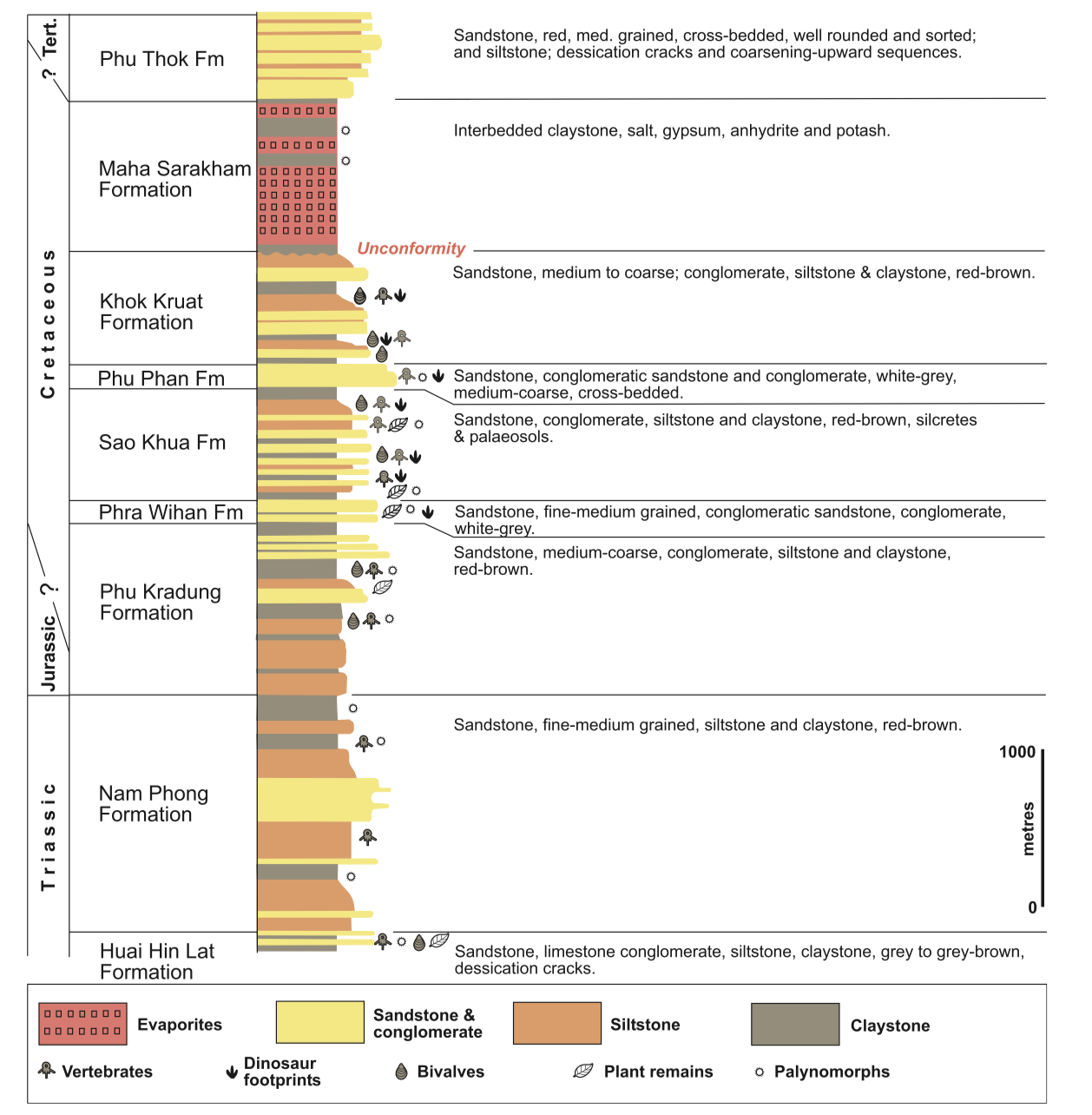Phu Kradung Fm
Type Locality and Naming
Synonym: หมวดหินภูกระดึง
[Figure: The three sedimentary basins in which the marine Jurassic occurs, and their relationships to the main faults which might subsequently have displaced them (MYF, Mae Yuan Fault; MPF, Mae Ping Fault; TPF, Three Pagodas Fault; KMF, Khlong Marui Fault). The main outcrop areas of non-marine Jurassic rocks are also shown. In some areas, particularly on Peninsular Thailand, the Jurassic succession contains both marine and non-marine facies (From Meesook A. & Saengsrichan W., 2011. Redrawn from Meesook 1994; Charusiri et al. 2002).]
Lithology and Thickness
[Figure: Composite stratigraphic column of the Mesozoic rocks of the Khorat Plateau, NE Thailand (Meesook and Saengsrichan, 2011).]
Relationships and Distribution
Lower contact
Upper contact
Regional extent
GeoJSON
Fossils
At the type section of the Phu Kradung Formation, Classopollis sp., Cyathidites sp. and Ballosporites hians Madler are also found. Racey & Goodall (2009) attach particular importance to the presence of Dicheiropollis etruscus at outcrop and in at least one borehole (Phu Horm 1) which they consider to indicate a Berriasian to Barremian (i.e. Early Cretaceous) age for all but the lower part of the Phu Kradung Formation (Meesook and Saengsrichan, 2011).
Age
Depositional setting
Additional Information

